Featured Articles
The Hauser Report: Adrien Broner Punks Out
Three competing fight cards of note were televised simultaneously on June 20. The most intriguing match-up of the night was on NBC and showcased Adrien Broner vs. Shawn Porter.
There was a time when Broner (30-1, 22 KOs) sought to position himself as the successor to Floyd Mayweather. No undersized punching bag was safe when Adrien was on the loose. His formula was to potshot opponents until he knew they were safe and then go after them. He had (and still has) prodigious physical gifts.
“At lightweight, where he was able to exploit his size,” Jimmy Tobin writes, “Broner walked opponents down and banged them out. His mediocre defense was masked by his ability to handle a lightweight punch. His struggles to transition between offense and defense were hidden by the fact that Broner never needed to take a backward step.”
But as Broner moved up in weight and the caliber of opponent improved, his limitations as fighter became evident. He won a narrow split-decision victory over Paulie Malignaggi at 147 pounds in 2013 and, later that year, was exposed in a unanimous-decision loss at the hands of Marcos Maidana.
Broner claimed that he wanted a rematch against Maidana. But as Carlos Acevedo observed, “Not only was Broner thrashed by Maidana, he was humiliated. He rose like a man suffering from Jake Leg after being knocked down in the second round, tried to buy a disqualification by writhing on the canvas like a two-year old in a Wal-Mart after Maidana butted him, hit the deck again in the eighth, was the victim of a revenge humping, and then fled the ring under a gauntlet of beer cups. Another loss to Maidana might have put an end to the Broner hype once and for all.”
So instead of fighting a rematch against Maidana, Broner went down in weight to 140 and fought three overmatched opponents. Then, on Saturday night, he squared off against Shawn Porter (25-1, 16 KOs) at the MGM Grand in Las Vegas at a catchweight of 144 pounds.
Porter’s resume had a unanimous-decision victory over Devon Alexander on it and also a majority-decision loss to Kell Brook. As a point of further comparison with Broner, Shawn wiped out Paulie Malignaggi in four rounds last year.
Porter was a 6-to-5 betting favorite. Broner has better natural gifts, but the feeling among those in the know was that Adrien is soft. Broner can trash-talk with the best. But it has become increasingly clear that he can’t back it up. Against Porter, he didn’t even try to.
Boxing maven Charles Jay has opined, “I hate it when a guy talks like a monster before the fight and then comes out and fights like a little lamb. I’ve seen it too many times, and it shows disrespect for the sport itself.”
That was Broner on Saturday night.
“Hit and don’t get hit” doesn’t mean “run, hold, and be boring.” There’s a difference between fighting cautiously and stinking out the joint.
Against Porter, Broner ran all night. Whenever Shawn got inside, Adrien tied him up. As the fight progressed, hugging and holding evolved into forearms to the throat. Then Adrien added headlocks to his repertoire. By round four, Steve Smoger (who was commentating for NBC) noted, “All we’ve seen so far is four rounds of fouls and forearms.”
Porter tried to make it more of a battle. But he couldn’t figure out how to do damage while coming in. And whenever he got inside, Broner tied him up. Adrien simply didn’t want to fight. And Shawn didn’t know how to fight a guy who didn’t want to fight.
Referee Tony Weeks let Broner continue to hold and foul until round eleven, when he belatedly deducted a point. It was one of the few times in memory that the crowd has roared its approval when the referee took a point away from a fighter.
Early in round twelve, Porter got sloppy and Broner landed a hook up top that put Shawn on the canvas. But when Porter rose, Adrien went back to holding and hugging rather than going for a knockout (which he obviously needed to win).
Porter prevailed by a 118-108, 115-111, 114-112 margin on the judges’ scorecards and had a 149-to-88 advantage in punches landed.
Thereafter, Broner nonsensically proclaimed, “I’m okay. It’s okay. It don’t matter. I’m a real animal. I came to fight today and I didn’t get the decision. But at the end of the day, everyone here will take my autograph and my picture.”
Broner isn’t as good as he says he is. Boxing fans figured that out a while ago.
* * *
David Lemieux (33-2, 31 KOs) vs. Hassan N’Dam (31-1, 18 KOs) on FoxSports2 was a even-money fight in Lemieux’s hometown of Montreal for the vacant (and phony) IBF 160-pound world championship belt.
Lemieux is an entertaining fighter, who couldn’t get over the hump in back-to-back losses against Marco Antonio Rubio and Joachim Alcine in 2011. N’Dam who was knocked down six times in a 2012 loss to Peter Quillin, scored his biggest win last year, a unanimous 12-round decision over Curtis Stevens.
Lemieux wanted a slugfest. And because he was in the ring with a fighter who has limited defensive skills, he got one. That led to N’Dam being knocked down once in round two, twice in round five, and again in round seven; each time by a left hook up top.
They weren’t flash knockdowns. They were punishing damaging blows. And when Lemieux wasn’t knocking N’Dam down, he was loading up with both hands and pummeling him around the ring for long stretches of time.
One couldn’t help but compare N’Dam’s fortitude to that of Daniel Geale, who quit on his feet two weeks ago against Miguel Cotto. Unlike Geale, N’Dam took an incredible amount of punishment. And not only did he keep fighting; he kept trying to win.
In the end, the judges favored Lemieux by a 115-109, 115-109, 114-110 margin.
Lemieux vs. Gennady Golovkin will be fun while it lasts if it happens.
* * *
Andre Ward (now 28-0, 15 KOs) hasn’t joined the federal witness protection program. But he’s no longer in the thick of things either.
Ward rose to prominence with victories over Mikkel Kessler, Arthur Abraham, and Carl Froch in Showtime’s “Super Six” 168-pound tournament. But contractual problems, injuries, and a general disinclination to fight credible opponents limited him to two ring appearances in the forty-two months that followed.
Then Ward signed a promotional contract with Roc Nation at the start of 2015, demanded a tune-up fight, and was relegated to BET, where he fought England’s Paul Smith (35-5, 20 KOs) on Saturday night.
Smith, a likable man who has never beaten a world-class fighter, was a 30-to-1 underdog. He simply didn’t have the tools to challenge Ward on any level.
Ward fought a safety-first fight. After three dreary rounds, he had a 72-to-10 edge in punches landed. The rest of the fight was no different. During the seventh stanza, blow-by-blow commentator Barry Tompkins observed, “It’s been the same dance since the opening round.” The seventh round also saw Smith cut above the left eye (which has been a problem for him in recent fights). In round nine, Ward broke Smith’s nose; blood began to pour; and Paul’s corner stopped the fight. Andre won every minute of what looked like a one-sided sparring session.
Fights like this might help Ward’s bank account. There are reports that his purse for the fight was $2,000,000. But they don’t help the Roc Nation brand.
Meanwhile, Ward’s status in boxing is best understood when one compares him to Miguel Cotto.
Ward is undefeated. When last in action, he was rated #2 on most pound-for-pound lists. Both Ward and Cotto are signed to Roc Nation. Each man fought a B-level opponent this month. But Cotto fought on HBO and Ward needed a time buy on BET to get his comeback fight on television.
There are two opponents of note outside of the Al Haymon universe that Ward could fight next: Gennady Golovkin at 168 pounds and Sergey Kovalev at 175. No other foreseeable Andre Ward fight matters.
* * *
A word on Sergio Martinez, who announced his retirement from boxing on June 13 at age forty.
Martinez walked into a boxing gym for the first time at age twenty. He turned pro three years later and compiled a ring record of 51 wins, 3 losses, and 2 draws. On April 17, 2010, he decisioned Kelly Pavlik to claim the world middleweight crown. Six successful championship defenses followed. But as Sergio grew older, his body betrayed him. Plagued by a bad knee that limited his training and ring movement, he was dethroned last year by Miguel Cotto.
I was priviliged to spend the hours before and after a fight in Martinez’s dressing room on six occasions. The first of these came on November 20, 2010, when Sergio rendered Paul Williams unconscious with a crushing overhand left in the second round.
Williams and his trainer, George Peterson, later spoke of a “lucky punch.”
“It definitely wasn’t a lucky punch,” Sergio countered. “Anybody who has seen the tape – it’s not too long – sees me throwing the same punch six times and landing five, and then I knock him out. It was a premeditated punch, not lucky.”
David Greisman’s analysis supported Sergio’s view.
“Can we please put this to rest, already,” Greisman wrote. “Martinez landed the same timed overhand left as the knockout punch numerous times in both his first fight with Williams and in their rematch. By my tally, Martinez landed it fifteen times in their first bout, including nine times in the final three rounds of the bout, as he realized it was another weapon that would work on Williams. And in the rematch, Martinez landed it half a dozen times in four minutes. Seven times, if you count the final blow.”
Outside the ring, Martinez has been an advocate for women who have been subjected to domestic violence and for children who’ve been the target of bullying in school.
“A world-class fighter doesn’t have to act like a thug,” he says. “As a professional athlete who is in the public eye, I have a duty to speak out on behalf of people who need help and are not heard.”
Sergio Martinez has always conducted himself with dignity and grace. Boxing will miss him.
Thomas Hauser can be reached by email at thauser@rcn.com. His most recent book – Thomas Hauser on Boxing – was published by the University of Arkansas Press.
-

 Featured Articles3 weeks ago
Featured Articles3 weeks agoThe Hauser Report: Zayas-Garcia, Pacquiao, Usyk, and the NYSAC
-
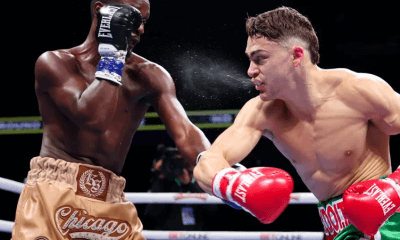
 Featured Articles2 weeks ago
Featured Articles2 weeks agoOscar Duarte and Regis Prograis Prevail on an Action-Packed Fight Card in Chicago
-
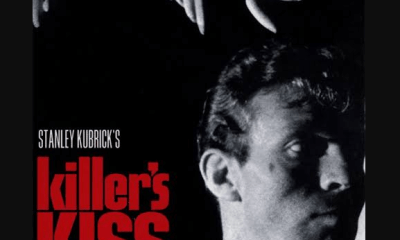
 Featured Articles1 week ago
Featured Articles1 week agoThe Hauser Report: Cinematic and Literary Notes
-
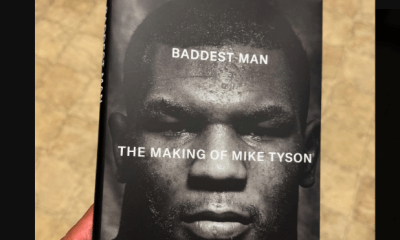
 Book Review4 days ago
Book Review4 days agoMark Kriegel’s New Book About Mike Tyson is a Must-Read
-
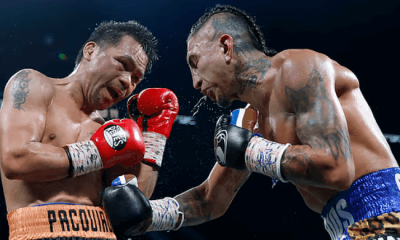
 Featured Articles4 weeks ago
Featured Articles4 weeks agoManny Pacquiao and Mario Barrios Fight to a Draw; Fundora stops Tim Tszyu
-
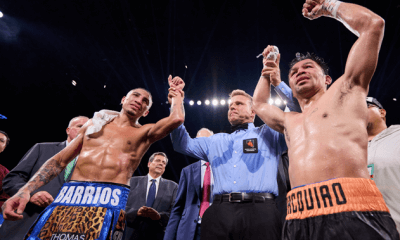
 Featured Articles4 weeks ago
Featured Articles4 weeks agoArne’s Almanac: Pacquiao-Barrios Redux
-

 Featured Articles3 weeks ago
Featured Articles3 weeks agoRemembering Dwight Muhammad Qawi (1953-2025) and his Triumphant Return to Prison
-
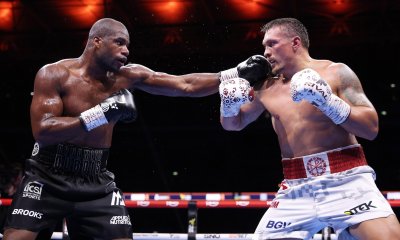
 Featured Articles4 weeks ago
Featured Articles4 weeks agoOleksandr Usyk Continues to Amaze; KOs Daniel Dubois in 5 One-Sided Rounds












